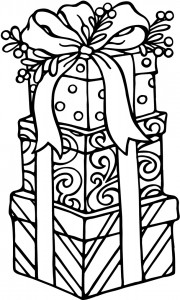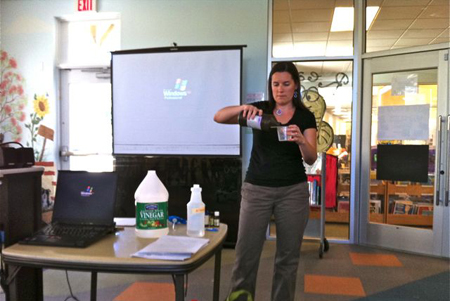 Spring Cleaning: Clear your clutter and re-energize your life
Spring Cleaning: Clear your clutter and re-energize your life
submitted by Tara Fisher-Munoz
It’s that time of year – Spring cleaning! Spring is the season of renewal, manifestation, celebration and love. There are so many books available to discuss various ways of clearing your clutter and getting more organization in your life. From my personal experience, I can attest to how much better you feel once you get your home organized and donate your used items that are no longer needed or loved. I have found that once I get rid of many items that were cluttering our home and my mind, I have felt a sense of freedom and pure joy!
According to Karen Kingston in “Clear Your Clutter with Feng Shui,” there are four categories of clutter:
- Things you do not use or love
- Things that are untidy or disorganized
- Too many things in too small a space
- Anything unfinished.
You are connected to everything you own by fine strands of energy. When your home is filled with things that you love or use well it becomes an incredible source of support and nourishment for you. Clutter on the other hand, drags your energy down, and the longer you keep it, the more it will affect you. When you get rid of everything that has no real meaning or significance for you, you literally feel lighter in body, mind and spirit.
With clutter of the just-too-much-for-the-amount-of-space variety, your home starts to feel as if it can’t breathe, your own breathing will actually become tighter and shallower, and you will feel constricted in what you can do in your life.
When going through your items, you can utilize a list of questions and decide which items to keep, donate or throw away based on your answers. Do you really love it? Do you need it now? Can you imagine yourself or anyone in your family ever loving or needing it in the foreseeable future? If you can’t answer yes to any one of these questions, sell it, donate it, or recycle it.
How do you decide what to throw out? Keep these three key guidelines in mind:
1. If it (the pair of shoes, the hat, the picture, the memory) weighs you down, clogs you up, or just plain makes you feel bad about yourself, throw it out, give it away, sell it, let it go, and move on.
2. If it just sits there, taking up room and contributing nothing positive to your life, let it go. If you’re not moving forward, you’re moving backward.
3. If you agonize over it for too long, throw it out. Don’t make the decision — whether to toss it or keep it — a hard one.
Everything around you, especially your home environment, mirrors your inner self. So by changing your home you also change the possibilities in your own life. Removing obstacles that impede the flow of energy in your living environment creates more harmony in your life and also the space for wonderful new opportunities to come to you.
List of places to recycle, donate and sell in Austin
- Neighborhood curbside recycling (relatively limited, but will become Single Stream Recycling soon)
- Ecology Action (almost everything except styrofoam) on 9th and S IH 35
- Cycled Plastics (styrofoam) 10200 McKalla Place, Ste. 100, Austin
Used clothes and accessories
- Donate: Freecycle, Safe Place, Goodwill, The Salvation Army
- Sell: Craigslist, Buffalo Exchange, Plato’s Closet, EBAY or a local consignment shop
- Reuse: socks and other cotton materials make great cleaning cloths!
- We could also organize a neighborhood swap for unused, but still in good condition items!
Electronics
- They can be recycled at http://www.ertinc.net/ or Goodwill.
- Target accepts glass, MP3 players and old cell phones for recycling. Their containers are towards the front of the store, near the customer service desk.
CD’s and DVD’s
- You can sell them to Waterloo Records or Cheapo Discs or you can donate them to a thrift store. Or you can use them in your garden to detract the birds from your vegetable garden.
- Waterloo will take your CD jewel cases.
Computers and/or Macs
- You can donate your computer to Goodwill if it’s in useable condition. If not, Dell accepts computers for recycling. Apple will accept computers to recycle for free if you are buying a Mac and they provide recycling for your old iPods.
Scrap metal can be recycled at CMC Metal Recycling (512-251-3407) and Austin Metal and Iron Company (512-477-4640).
Food
- If it is non-perishable, you can donate to Food Pantries, such as Capital Area Food Bank, Eastside Community Connection, Caritas, Casa Marianella, Green Corn Project or The Serving Center in Round Rock.
- All other food (other than meat and dairy) can be composted in your backyard and made into wonderful, nutrient-rich soil.
 How to make your summer vacation more eco-friendly
How to make your summer vacation more eco-friendly
By Tara Fisher-Munoz
It’s summer vacation time! You’ve worked hard all year and now it’s time to sit back, relax and enjoy! If you have family, it’s also a great time to reconnect and create lasting memories. While enjoying this special time together, please also consider the environment and try to make your trip as eco-friendly as possible. Below are some tips to make your vacation eco-friendly:
- Consider a “staycation.” How many times have you said, “I would really like to go to (insert local tourist destination) if only I had time?” Well, now is the time, grab the bull by the horn, carpe diem and all that. I have an ongoing list of places that I would like to visit in Austin and haven’t found the time yet. A staycation is the perfect excuse to explore your home town and it’s definitely the most eco-friendly option as most local destinations are within an hour’s drive.
- If you must fly somewhere, consider buying carbon offsets to reduce the impact of your trip. This money will be used to clean the air by planting trees or supporting other renewable resource projects. (www.carbonfund.org)
- Consider staying at an eco resort or eco-friendly hotel. You can use Travelocity’s website (http://www.travelocity.com/TravelForGood/gr-directory.html) to book a green hotel. Or, consider using homeaway.com to stay at a place with a kitchen (this saves a lot of money, is healthier and it’s more environmentally friendly to cook your own food).
- Take your own toiletries instead of using the small, wasteful hotel bottles. By taking your own favorite toiletries, you ensure quality control (think of all the chemicals in the cheap bottle of shampoo/conditioner).
- Pack lightly. The lighter you pack, the better for your body and the environment. The heavier the luggage in the trunk of the car or the airplane, the more fuel is needed to get to your destination. If you’re a frequent flyer, you might also want to check out the jet card programs at Jettly.
- Instead of renting a car at your final destination, consider utilizing public transportation or other modes of transportation, such as walking or biking. If you must rent a car, try to rent a hybrid model or a model that gets better gas mileage.
- Volunteer for your vacation. Studies have shown that volunteering can play a role in increasing your sense of well-being, alleviating chronic pain and even reducing depression. And, your volunteer vacation may be tax-deductible to boot! http://www.thedailygreen.com/environmental-news/latest/eco-travel-volunteer-vacations-50022309
- Support local restaurants that buy their food from local farmers rather than eating at a chain restaurant. Not only will you get more tasty, healthy food, you will also be supporting the local economy and environment.
- Instead of buying cheap souvenir trinkets (most likely made in China), consider buying homemade keepsakes from local artists and businesses who have local products that will give you something that is truly reminiscent of your vacation destination. I usually like to buy a local homemade food product, such as jams and jellies and then when you consume them, you are reminded of your vacation.
- Don’t forget to unplug all of your appliances, such as toasters, TV’s, blenders, DVD player, etc. before you leave for vacation. This will cut down greatly on “phantom” energy and save you money at the same time.
Be green and enjoy your travels!
10 Tips for Going Green
January 2011
What a great time of year! Now that the hustle-bustle of December is over, it’s time to set some goals. I always consider January the perfect month to start with a clean slate and set some objectives to accomplish throughout the year. It is time to go green and here are a few tips to help you do so!
Tip #1: Visit a local Farmer’s Market today or sign up with a CSA (Community Supported Agriculture) for a weekly box of fresh produce!! Or, even better — Grow your own. The WB Gardening Guild meets on the first Saturday of the month at 11am at the WB Library. By eating local, in season produce, you support your local farmer and it’s absolutely delicious!
Tip #2: Let’s make it a NO waste school and work year! Instead of using numerous disposable plastic baggies and juice/milk boxes, let’s use reusable containers! There are so many great choices out there: Lunchbots (my favorite), Laptop Lunches, plastic containers, cloth sandwich bags, Kids Konserve containers and Klean Kanteen/Thermos for drinks! Also, consider packing reusable silverware and cloth napkins. Check out kidskonserve.com for some great reusable choices and information on how much you save financially and environmentally by choosing reusable containers.
Tip #3: Switch to CFL light bulbs instead of incandescent! CFL’s are 75% more efficient, last from 10 years+ (for 10,000 hours) and pay for themselves very quickly in energy savings! If everyone in the U.S. switched to CFL’s, we could retire 90 power plants from production!! Pretty amazing, right?!
Tip #4: When you go shopping (not just grocery shopping), take a reusable tote with you. Not only is it trendy and sustainable, but you also save the environment from plastic bags (which usually end up in our waterways) and the energy that it takes to make that plastic bag!
Tip #5: Turn your water heater down to 120 degrees!! For each 10ºF reduction in water temperature, you can save between 3%–5% in energy costs. And, by lowering the thermostat, you also lower your chance of scalding injuries.
Tip #6: Turn off the water while you brush your teeth and save 4 gallons a minute. That’s 200 gallons a week for a family of four. Turn the water off while you lather your hands and while shaving, too and save even more!! Also, consider buying faucet aerators and low flow shower heads. You can save as much as 50% in water and energy costs by installing these items. We bought ours from USAlandlord.com and have enjoyed great monthly savings by having them!
Tip #7: Discontinue using anti-bacterial products! They contain Triclosan, which is an extremely dangerous chemical. Triclosan is linked to liver and inhalation toxicity. Even low levels of Triclosan may disrupt thyroid function. Wastewater treatment does not remove all of the chemical and Triclosan ends up in lakes, rivers and water sources, where it is very toxic to aquatic life.
Tip #8: If you are going shopping today, buy something organic! Simply stated, organic produce and other ingredients are grown without the use of pesticides, synthetic fertilizers, sewage sludge, genetically modified organisms, or ionizing radiation. Plus, organic produce just tastes so delicious! And, items made w/ organic cotton last 10 times longer than conventionally grown cotton!!
Tip #9: Buy recycled toilet paper! If every household in the United States replaced just one roll of virgin fiber toilet paper (500 sheets) with 100% recycled ones, we could save 423,900 trees! I absolutely LOVE trees (is it obvious?!) and could not imagine a life without them!
Tip #10: Consider replacing your toxic coated cookware with stainless steel, cast iron or hard anodized cookware. You will save your body and the environment from harmful chemicals! I am looking forward to hearing about the steps that you are taking or have taken to become more eco-friendly! Just send me an email at vidagreenconsulting@gmail.com or check out my Facebook page for Free Daily Green Tips at www.facebook.com/vidagreen.
Visit Tara on her new website: www.vidagreenconsulting.com
Haunt Responsibly: How to be an eco-friendly Goblin this Halloween
By Tara Fisher-Munoz
Each Halloween, an estimated $40 per capita is spent on candy, decorations and greeting cards, all of which produce large amounts of waste. Here are some eco-friendly tips to make this Halloween a little less crushing for the planet, your wallet and your health while still having a “spirit-filled” good time!
1. Hand out organic goodies. From lollipops to gummy bears, many companies specialize in making healthier alternatives to traditional candy. YummyEarth offers organic treats with no chemical colors, artificial flavors or corn syrup. You can find them at major retailers like Sprouts and Whole Foods. Or you could forego the sweet treats and hand out little playing cards.
2. LED the way. Consider using LED lights or solar-powered lamps to light the path to your front door for those trick-or-treaters. An investment in solar garden lights can save you long term, with an amazing return on investment of 47 percent over 10 years.
3. Host a costume swap. Skip the Halloween mega store with cheap materials and host a small costume swap party with your neighbors and friends. You may even come up with new ideas for a show-stopping outfit.
4. Use what you already have. Although it’s easy just to buy that $2 plastic pumpkin basket at the grocery store, see if you can find something in your home that can double as a trick-or-treat bag. You could use your reusable grocery bag, the wicker magazine basket in the bathroom, your over-sized purse you never use or even a plastic shopping bag stuffed under the sink.
5. Be a “craftster” for Halloween. DIY costumes and decorations are easier than you think and can save a ton of money. Plus, the kids will have a great time creating Halloween crafts, like a recycled light bulb witch or egg carton pumpkins.
6. Sweep the sidewalk. If you’re expecting trick-or-treaters, it’s probably a smart idea to clear away the fall leaves. Instead of using a hose, save countless gallons of water by sweeping them with a broom. And remember, those leaves can be added to your compost pile.
7. Don’t toss the pumpkin seeds. What Halloween would be complete without a jack-o-lantern on the front porch? This year, instead of throwing away the “guts” of the pumpkin you scooped out, toast the seeds for a snack or even make oil out of them. They also make a great addition to your compost pile.
8. Party like an eco-star. If you’re hosting a party this year, set out recycling bins for those beer bottles and soda cans. If it’s a small get-together, use the plates and cups that are already in your cabinets. But if this year’s shindig will be a 50-plus throwdown, check out dinnerware made from recycled or compostable materials.
9. Walk the neighborhood. The best part about trick-or-treating is seeing everyone’s costumes. So, leave the car in the garage, get out a flashlight and walk your kids around the neighborhood.
 10. Donate your costume on Nov. 1. Do you know of a program in your community that could use your costume? There’s probably a school, local theater troupe, shelter or center that just might love those fairy wings and fireman hat. Or you can continue to use them as “dress up” clothes for your children’s play time.
10. Donate your costume on Nov. 1. Do you know of a program in your community that could use your costume? There’s probably a school, local theater troupe, shelter or center that just might love those fairy wings and fireman hat. Or you can continue to use them as “dress up” clothes for your children’s play time.
Good luck, be safe and have fun on Halloween!
How to Make Your Holidays More Eco-Friendly
By Tara Fisher-Munoz
 By now everyone has heard about the value and importance of being “green.” Yet Christmas, one of the biggest holidays for retail, still generates unnecessary trash, uses precious resources, and creates quite a large footprint. It is not difficult to find ways to celebrate a green Christmas; it just requires a bit of creativity.
By now everyone has heard about the value and importance of being “green.” Yet Christmas, one of the biggest holidays for retail, still generates unnecessary trash, uses precious resources, and creates quite a large footprint. It is not difficult to find ways to celebrate a green Christmas; it just requires a bit of creativity.
The most important thing to consider when planning an environmentally friendly Christmas is priorities. Visiting out-of-town friends and family is important but it creates a large carbon footprint due to out-of-town travel. You could try to find other ways to cut back on your impact, by exchanging eco friendly Christmas gifts or using green Christmas trees. Consider a living Christmas tree, which remains alive through the season (don’t forget to water it!), and it can be picked up after New Year’s Day to be composted.
Green Christmas cards, recycled wrapping paper and reusable bags are great options for a Green Christmas. Consider re-using paper already in your house, rather than buying new wrapping paper, a waste of both paper and the plastic it is wrapped in. Make your own cards with supplies at home, or buy cards made of recycled paper. Use your creativity to make presents for loved ones, rather than buying them. There are a plethora of DIY ideas — try searching the Internet for simple crafts, bake a batch of homemade cookies or bread, or start seedlings for an indoor house plant. Browse thrift stores, used book shops, local small businesses or consignment stores for treasures. People usually appreciate homemade Christmas gifts much more than mass market ones, and the planet will appreciate your consideration as well.
Green Christmas decorations can be homemade, or reused. Use LED Christmas lights to save energy. Celebrating a Green Christmas is well worth the extra effort and thought, and will save you some cash as well. Happy Holidays!
Green Living 101
by Tara Fisher Munoz November 2010What does green living mean to you? For me, it means taking small steps each day to tread lightly on our precious planet. For the most part, I grew up this way. I was taught from a very young age that we need to preserve our natural resources by reusing items, recycling every recyclable item and to conserve water and electr icity. There are so many things that you can do in order to live a more eco-friendly lifestyle, such as recycling, using less electricity and water, eating a healthier diet, using fewer chemicals, reusing what you have and reducing your consumption. It can be overwhelming, but I believe that if you just make one small step, it will empower you to continue on your green journey.
icity. There are so many things that you can do in order to live a more eco-friendly lifestyle, such as recycling, using less electricity and water, eating a healthier diet, using fewer chemicals, reusing what you have and reducing your consumption. It can be overwhelming, but I believe that if you just make one small step, it will empower you to continue on your green journey.
Being green just makes sense. Not only does it help the environment, but it helps your health and pocketbook! Listed below are a few of the choices that I feel would make a large difference in a small amount of time:
- Invest in a good quality water bottle. This will last you a very long time and you save an incredible amount of money by not purchasing bottled water. Did you know that tap water is more regulated than bottled water? Chances are, your tap water is healthier than the over-priced bottled water.
- When doing any sort of shopping, use a tote, rather than accepting a plastic or paper bag from the store.
- GREEN CLEAN! Please, put away the endless bottles of toxic chemicals and the harsh smell of bleach for a gentler, easier on the body, green cleaner. Simple homemade solutions can be made in mere minutes or you can simply use baking soda, vinegar and hydrogen peroxide for almost all types of cleaning.
- Save water! Taking small daily steps greatly add up over time. Shorten your showering time, turn off the tap when brushing your teeth, lather up your hands with the faucet turned off, use Watersense toilets (rebatable through the City of Austin), use rain barrels (also rebatable) in the garden, only start the dishwasher with a full load, etc.
- Save electricity! Turn off the lights when you are not using them, use CFL bulbs, use powerstrips to turn off your electric machines at night, etc.
- Reduce, reuse, recycle. Reduce what you buy (I know .. so un-American, but who really needs all this stuff that we tend to accumulate?), reuse what you have and recycle all the rest.
- Eat less meat and processed foods! This is a biggie! Not only are these items completely unhealthy for you, but they cost a lot of money and cause many future medical issues! Prevention is the key! Regarding processed food, do you know how to read a label? Do not be misled by what the packaging states, but learn how to read a nutrition label!
- Be present! Be mindful! Enjoy what you have!
